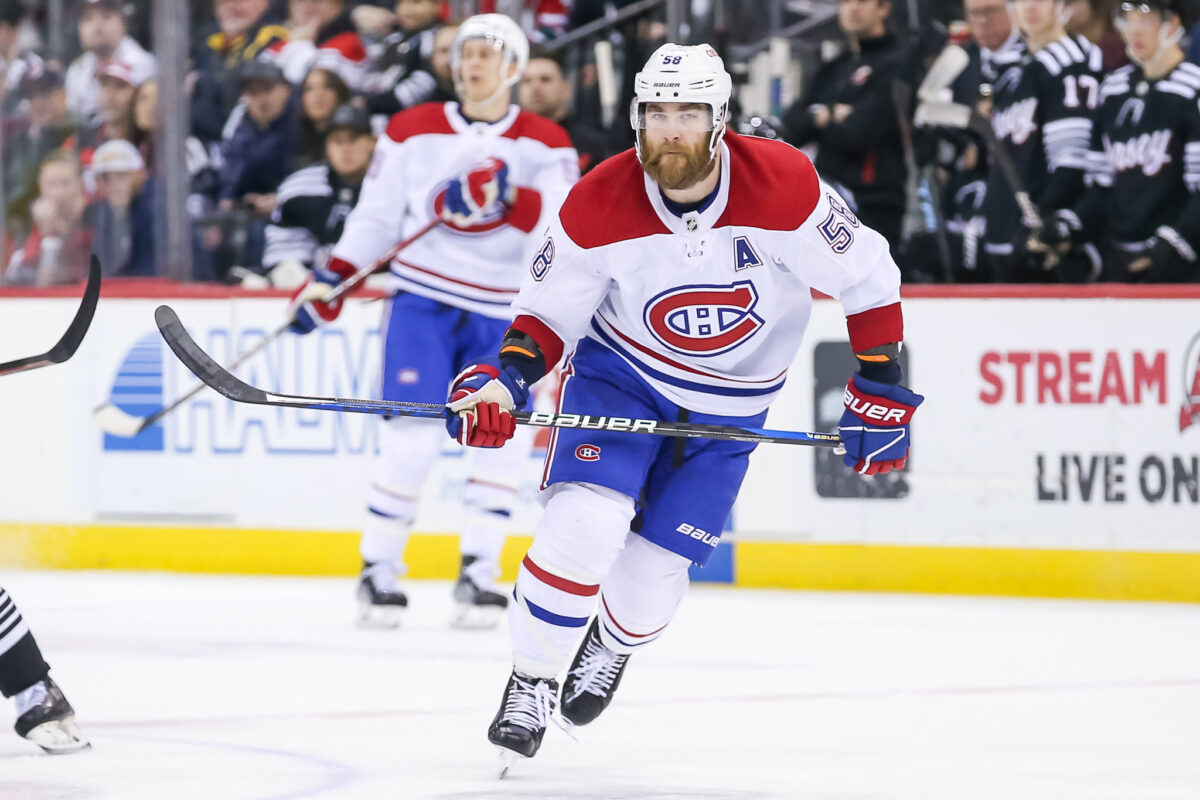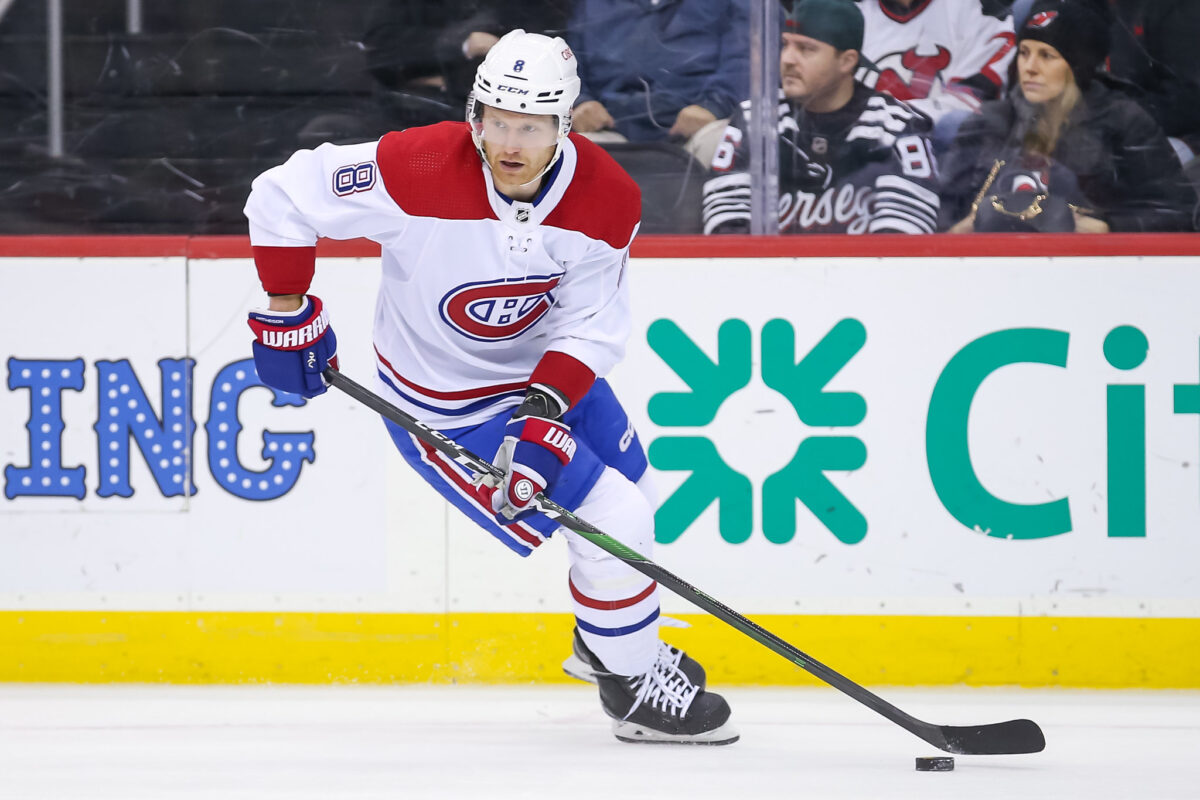Thankfully, Montreal Canadiens defenseman Justin Barron is far from facing a mission impossible. It’s just far from mission accomplished at this juncture despite all appearances.

A few days ago, on Dec. 18, Barron scored the overtime winner against the Winnipeg Jets. It was his Canadiens defense-leading sixth goal, while he trails just Mike Matheson in points (11 vs. 21). Granted, that’s a pretty big difference in points, even taking into account the three additional games Matheson has played. However, there’s also a pretty big difference between Barron’s point total and the five of Johnathan Kovacevic, who’s the next-highest-scoring right-handed defenseman.
Barron’s Particular Set of Skills
After Kovacevic, the next-highest-scoring right-handed defenseman is Gustav Lindstrom (three goals, one assist), who’s more so a depth option than anything else. Then there’s David Savard (one goal, two assists). Lindstrom and Savard present an interesting dichotomy for the piece’s purposes.
If Lindstrom’s willingness to jump into the play hasn’t saved him from the sidelines, why should it Barron in the face of his similar defensive shortcomings? Meanwhile, Savard is at the other end of the spectrum as a purely stay-at-home defenseman (at least in principle), someone the Canadiens trust with a team-leading 3:51 per game in shorthanded ice time. Barron has 1:08 for the record (Lindstrom just 18 seconds).
The easy answer is Barron gives the Canadiens a happy balance between the two. Delving deeper though, Lindstrom’s offensive “ability” (just 25 points in 128 NHL games heading into 2023-24) simply doesn’t compare to Barron’s to the point of making up for his miscues. Barron just has more talent with which to work.
Barron may not have the defensive awareness of a Savard, but that shouldn’t be his problem. Certainly, it’s something on which he can work, but, at the end of the day, they provide the Canadiens two separate skill sets, Barron’s aligning more with general manager Kent Hughes’ original offensive-minded vision for the team. Keep in mind, he inherited Savard’s contract. He traded for Barron.
Barron’s Big Test
While Barron did make the team out of training camp, he admittedly started the season on the bench, only getting in after the left-handed Kaiden Guhle got injured three games in with a short-term injury. However, fellow-rightie Savard followed suit literally two games later, opening the door for Barron to get an extended audition to prove himself.

Obviously, Savard has since returned. While Barron’s ice time hasn’t taken a big hit, in three of the four games since, his ice time has come in under his season average (Savard’s coming in higher than his average, also in three of four games). Barron’s still getting a fourth-ranked 19:55 per game, which is still fairly significant, below Savard (21:13), Guhle (21:16) and Matheson (25:18). If the initial idea had been that Barron would stay in as long as Savard was out, that’s your mission accomplished, but it shouldn’t be based on how circumstances have changed on the injury front.
It’s worth noting the since-injured Arber Xhekaj and Jordan Harris are seemingly on their way back into the lineup. Xhekaj was assigned to the Laval Rocket, presumably on a temporary basis. He still clearly has a role to play on this team, at least one would think.
In any case, that’s more of a debate between Xhekaj and Jayden Struble, who was effectively called up to replace the former in the lineup. Both are righties who each play with a similar physical edge. On the other hand, while Harris is also a rightie, he has also played a lot on Barron’s left side this season.
Related: Likeliest Canadiens Call-Ups to Have Impact Beyond 2023-24
So, Harris’ impending return is more of a litmus test for how the Canadiens see Barron as far as their long-term plans go. Savard arguably shouldn’t factor in, with his contract expiring in 2025. Some analysts have even suggested Hughes could/should trade Savard by the next trade deadline (from ‘What can the Canadiens get by trading David Savard?,’ Montreal Gazette, Dec. 6, 2023).
Barron vs. Matheson
Up until that point, the Canadiens will have find a way to make room, especially for Barron. Harris still has a place on this team, but, again, the two defensemen are two different players. Matheson again represents the closest comparable to Barron, just on opposite sides of the ice. If Matheson can be played to the degree he has been by head coach Martin St. Louis in spite of his defensive struggles, it stands to reason Barron can become just as valuable, considering the eight-year age difference.

Remember, Matheson really only established himself as a tour de force offensively after having been acquired by Hughes from the Pittsburgh Penguins at 28 years old. So, two takeaways:
- Hughes believes in both Barron and Matheson, having acquired them both.
- Barron still has room to grow.
More to the point, Barron still has time to grow. He should be given that time with the Canadiens, despite the defensive shortcomings. The Habs are still rebuilding too. So, now’s the time to make mistakes and learn from them.
A failure to enable the team’s younger players to screw up and grow from those mistakes when overall expectations are so low would only amount to the Habs failing themselves in the long term, especially when veterans like Matheson have gotten as much leeway as they have. Furthermore, Barron is far from the only young player to fall flat on occasion.
Why single Barron out as being part of a non-existent problem? He’s a potential impact player as Matheson proves… Barron himself proves as his recent overtime goal goes to show. The Canadiens just have to willingly accept the challenge before them of giving him the opportunity to develop the right way. It’s clear Barron has.
